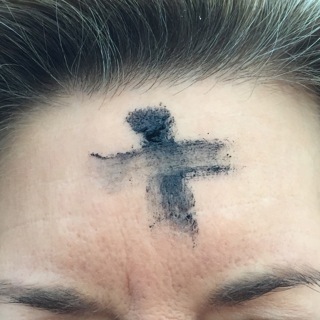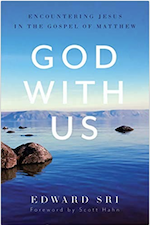Sarah Christmyer's Blog, page 10
March 20, 2020
WHAT TO DO WHEN THERE’S NO EUCHARIST: Thirsting for Jesus during COVID-19
I don’t know about you, but I’m thirsty for Jesus.
I’m hungry for the Eucharist.
I want him. Physically, tangibly. Less than 10 days into coronavirus-prompted deprivation, I have a longing I’ve never experienced before. It’s a longing I never thought I’d have, given 30 years of experiencing his presence spiritually as a Protestant, ignorant of what I was missing. Even as a Catholic, it took years to understand: “This is my Body” is for real. “This is my Blood, given for you.”
Take … and eat. Drink.
I am thirsty. I’m hungry.

Priest offering the Eucharist. Image by RobertCheaib from Pixabay.
What are we going to do?
A friend said, I find him outside, in the beauty of nature. Another: I close my eyes and enter my heart, and meet him there. And just as I have done daily since I was 15, I open my Bible and listen as the Lord speaks to me, comforting, consoling, challenging my heart.
All of that’s good. But it’s not the same.
There are levels of communion with the Lord. Not one is like the co-mingling of body and blood that takes place at Mass, him in me until I become part of him.
As a deer longs for flowing streams,
So longs my soul for you, O God.
My soul thirsts for God, for the living God.
When shall I come and behold the face of God? (Psalm 42:1-2)
As I learn to live with this new thirst, I wonder. Have I taken that communion for granted? Going weekly, daily sometimes, taking his Body and Blood in all reverence, to be sure, but not with this longing and desire. Have I appreciated the gift?
Absence makes the heart grow fonder, they say.
How true that is.
A lesson from the past
The Old Testament is instructive in this time of forced thirst. God formed his people in the desert, where they rebelled when they got thirsty. In Meribah they forgot his care, doubted his presence, and wished themselves back in Egypt! Miraculously, he provided water from a rock. But the story lived on as a warning. “Harden not your hearts as at Meribah,” God pled with them through the psalmist, years later. “Oh that today you would listen to his voice!” (See Psalm 95:7-8.)
Then in Psalm 81:
I tested you at the waters of Meribah
Hear, O my people, while I admonish you!
O Israel, if you would but listen to me!
There shall be no strange god among you;
you shall not bow down to a foreign god.
I am the LORD your God,
who brought you up out of the land of Egypt.
Open your mouth wide, and I will fill it.”
O my people: listen to me!
What might God be saying to us today, through this enforced deprivation?
We too are people who know, personally, the saving work of God … who have entered a desert of sorts. Do we trust that the Lord is our shepherd even here, even when he cannot be seen and touched?
Do we let panic at the hardships that come our way harden our hearts and close our ears to his voice?
Can we take this as an opportunity to examine our hearts?
Perhaps we have allowed “strange gods” among us, even while worshiping him. Have we bowed to the god of work? Of self-sufficiency? Of pleasure?
Has safety lulled us to sleep? Has excess dulled our desire?
If God has allowed us to go hungry for a time, even for him, let us …
… turn to him all the more in our hearts
… examine our lives and repent
… fill our minds and hearts with his Word
… enter spiritually into his presence
… offer up our sufferings
… not put the Lord to the test
… approach him with gratitude, thanksgiving and trust
… ask, humbly, for his grace.
Let us focus our longing on him. And let us wait in patience for the water from the Rock that is Christ [link: 1 Cor 10:4].
Open your mouth wide, and He will fill it.
© 2020 Sarah Christmyer
You might also like:
Thirsty? Choose Where to Go With Your Longing (learning from the Woman at the Well)
Thirsting for God (first in a series of posts on how the Psalms teach us to reach out in thirst to the One who can satisfy).
Dr. Edward Sri talks about making a spiritual communion and how to worship even when we can’t go to Mass in The House of the Lord is Closed but the Glory Has Not Departed .
The post WHAT TO DO WHEN THERE’S NO EUCHARIST: Thirsting for Jesus during COVID-19 appeared first on Come Into The Word with Sarah Christmyer | Bible Study | Lectio Divina | Journals | Retreat.
March 14, 2020
REASON FOR HOPE DURING COVID-19
Like many people, I spent the last few days trying to assimilate the rapidly-evolving directives regarding Covid19. One day it seemed enough to simply practice good hygiene and stock the larder, so I got on a plane to my next speaking engagement. Within hours of my arrival the picture had changed. Schools were shutting down, flights were cancelled, large gatherings were banned. Needless to say, the event was cancelled and I spent another day negotiating new flights and braving airports while wondering if I should be driving instead … trying to touch nothing, especially my face … fleeing an enemy that can’t be seen.
Through it all, Romans 15:13 came repeatedly to mind:
May the God of hope fill you with all joy and peace in believing, so that by the power of the Holy Spirit you may abound in hope.
Things may well get worse before they get better. Already I know people who have lost work and have no reserves to hold them through; people stranded overseas; people who had to close up shop and wonder if and when they’ll reopen. Soon, no doubt, I’ll know people who get sick. Who maybe don’t recover. Perhaps one of those people will be me or someone I love. But God ….

Our God is nothing if not “the God of hope” as St. Paul called him in that verse I can’t shake. What does that mean, to be “the God of” something … “the GOD of hope”?
Hope comes from God. He’s in charge of hope.
God is where we go for hope, and true hope comes from nowhere (and no one) else.
Our God is the reason we have hope at all.
Not only that, we can “abound” in hope. God is not stingy with his gifts. He doesn’t just pour a little on to ease the fear, he can fill us up to the point that we abound in hope. Abounding hope is not just adequate for our need, it pours out to others.
So what’s the catch? Well, not a catch exactly, but we do have a part to play. We can’t manufacture hope ourselves, but the Holy Spirit pours it into those who believe. Faith in God – in who he is, and in what he has done, and in all he has promised us – opens us up to receive that “peace that passes understanding” and the supernatural joy that allows us to face trials with … you guessed it: HOPE. (See Philippians 4:7, John 14:27, and James 1:2 for more on this.)
We Christians should be the most hope-filled and joy-filled people around. Why? Because we have the ultimate reason for hope. A Christian without hope has forgotten that Jesus overcame death and is walking with us toward eternal blessing and joy.
Maybe it’s no coincidence that the impact of coronavirus is first hitting us during Lent. Let’s take advantage of the forced isolation to spend time with the Lord. To ask him to renew our appreciation of his Sacrifice and all it means for us now, as we live our lives in a world where so much is uncertain and tends toward chaos and death. Let us enter his desert and turn our thirsty hearts to him to be filled.
May the God of hope fill you with all joy and peace in believing, so that by the power of the Holy Spirit you may abound in hope — and so that in abounding, your hope will overflow to the hopeless around you.
Grace and peace,
Sarah.
© 2020 Sarah Christmyer
Related posts:
Faith and the “Rope of Hope”
Wisdom from James: “Count it all Joy”
It’s Your Choice to Rejoice
Trust God, the Divine Artist
The Who, What, When, Where, & Why of Powerful Prayer
The post REASON FOR HOPE DURING COVID-19 appeared first on Come Into The Word with Sarah Christmyer | Bible Study | Lectio Divina | Journals | Retreat.
March 7, 2020
JESUS IS CALLING. LISTEN TO HIM!
Above the altar hangs the risen Christ: not crucified, but suspended with the instrument of death behind him. His hands and feet are pierced but no nails hold him down. His arms are raised, stretched out to us who kneel below. His eyes are full of love. Meanwhile, I can’t stop looking up. It’s as if I hear him calling: “Come to me! Return to me!”

Altar at St. Patrick’s Parish, Malvern, PA. Photo by Sarah Christmyer
Walking into church, I felt as though I was carrying a cross — or maybe many crosses, all the burdens of this week — but hearing that call, I find myself carrying them forward. I lay them down (in my mind) at his feet and see, suddenly, that they no longer have any weight. He took my burdens to the grave and now his risen life is mine. “Come to me!” I hear again.
Come to me, all who labor and are heavy laden, and I will give you rest. Take my yoke upon you, and learn from me; for I am gentle and lowly in heart, and you will find rest for your souls. For my yoke is easy, and my burden is light. (Matthew 11:28-30)
There are so many reasons we might want to answer that call to come to him:
When we are hungry …
Jesus said to them, “I am the bread of life; he who comes to me shall not hunger.” (John 6:35)
When we thirst …
Jesus stood up and proclaimed, “If any one thirst, let him come to me and drink. He who believes in me, as the scripture has said, ‘Out of his heart shall flow rivers of living water.” (John 7:37)
When we are lost …
Jesus said to him, “I am the way, and the truth, and the life; no one comes to the Father, but by me.” (John 14:6)
Or have sinned . . .
If we confess our sins, he is faithful and just, and will forgive our sins and cleanse us from all unrighteousness. (I John 1:9)
Or when we feel worthless …
I chose you and appointed you that you should go and bear fruit and that your fruit should abide. (John 15:16)
That empty cross behind the Lord is a graphic reminder that nothing can separate us from his love, however bad or powerful that thing might seem. Jesus calls us out of our fears and pain and obsessions, out of our busy-ness and cares. He draws close to us and calls us to seek and know and love him. To carry our crosses to him and unite them with his, knowing that from that Cross came Resurrection. And his life is ours.
[image error]
“Come to Me.” Photo by Sarah Christmyer.
This Sunday at mass, you will climb the mount of Transfiguration with the Lord and with Peter, James, and John (Matthew 17:1-9).
You will hear a voice from the cloud, saying “This is my beloved Son, with whom I am well pleased; listen to him.”
Can you take a moment to do that – to listen to him? How is he calling you to come?
© 2020 Sarah Christmyer
The post JESUS IS CALLING. LISTEN TO HIM! appeared first on Come Into The Word with Sarah Christmyer | Bible Study | Lectio Divina | Journals | Retreat.
February 23, 2020
“HOW,” NOT “WHAT” — GETTING READY FOR LENT
The homily I remember best may also have been the shortest. It was Ash Wednesday morning, the early morning mass when everybody has to get to work and so there’s not a lot of time for extra details. The priest got right to the point:
“The Gospel is from Matthew 6,” he said. “Jesus tells us how to give alms, and pray, and fast.” He said a few words about the importance of our Lenten observance, and then— “When you get home tonight, take a moment. Open your Bible and read Matthew 6. Ask the Lord to speak to you there; to tell you in your heart, what you should do. Matthew 6. Don’t forget.”
And that was that.
Like I said, it stuck with me. And when I got home, I opened Matthew 6 to hear from Jesus what he thought about my plans for Lent. It wasn’t what I thought.

Photo credit: Mark Christmyer.
To begin with, there’s no whether you fast (or pray or give alms) about it. Jesus assumes that we will do these things — and not just during Lent. And instead of helping us with what to give, give up, and pray, he focuses on the how.
Read Matthew 6:1-6, 16-18 here
There’s a lot in these verses, and you may want to go read them yourself and see what strikes you as we head into Lent. Here are the things that stand out to me:
Be careful who you follow.
In particular, Jesus says, don’t be like “the hypocrites” who can be seen everywhere, telling others about their good deeds and making sure their prayer and giving can be noticed. Jesus mentions them specifically, three times in this gospel. The Greek word in Matthew is hupocritēs – an actor in a mask, pretending to be something he is not. The word was also used as a verb, to mean “pretending.” A “hypocrite” tries to make people think they are more spiritual than they are, by drawing attention to things they do.
Do you know anyone like that?
Are you ever like that?
All hypocrites get for their trouble, Jesus says, is the attention of other people. Don’t be like them.
You will be rewarded.
This surprised me, but it’s behind everything Jesus says here. Don’t do good things to show off, he says, because God won’t reward you. Don’t try to impress people with your prayer or giving, because the praise you get will be all you get. Don’t look hungry so people will know you are fasting, because their comment will be your reward. INSTEAD: give in secret; pray in secret; fast in secret — “and your Father who sees what is hidden will repay you.”
Our Lenten observance shouldn’t be done just out of duty. We can expect a reward! But a reward from our Father in heaven, not the reward of public opinion and praise. As Jesus said after telling us to give to everyone, even those who deserve it, expecting nothing in return:
“Give, and it will be given to you; good measure, pressed down, shaken together, running over, will be put into your lap. For the measure you give will be the measure you get back” (Luke 6:38).

In other words, give to others and God will take care of you. Not stingily, but giving you more than you can hold. You will never outdo God in generosity.
It’s about quality time with God.
I’m struck by how intimate this passage is. As I read, I find each paragraph drawing my attention progressively away from myself and close to God, where I’m alone with him:
• Verses 1-4: Don’t let your left hand know what your right is doing …
• Verses 5-6: Go to your inner room, close the door, and pray …
• Verses 16-18: Anoint your head and wash your face, so only your Father, who is hidden, will know.
Planning for Lent
Come to think of it, all three of the things we do in Lent are ways to grow in our relationship to God, and we can take that into account as we plan how to do them:
1. What is prayer, but a drawing close of our hearts to his?
—Ask yourself: How can I add more quality time with the Lord into the next 40 days?
2. What is fasting, but a self-emptying in order to be filled by him?
—Ask yourself: What am I attached to that I can fast from in Lent, in order to make a space for yearning for God?
3. What is giving, but a recognition that all comes from God – and a sharing of him with others?
—Ask yourself: What have I received, and how can I give of that to others?
Let’s get closer to God this Lent by aiming our prayer and fasting and alms-giving to him.
© 2020 Sarah Christmyer
The post “HOW,” NOT “WHAT” — GETTING READY FOR LENT appeared first on Come Into The Word with Sarah Christmyer | Bible Study | Lectio Divina | Journals | Retreat.
February 7, 2020
SCRIPTURE MATTERS! Seven Reasons to Pick up the Bible and Read
I grew up in a Bible-believing, Bible-reading, Bible-loving Protestant family. You could say that the Bible was our Sacrament: it was the place where we met God. At least, it was the place where my parents met God, and the place from which they dispensed wisdom and taught us right from wrong. I wasn’t much interested in it myself, beyond giving it lip service. I didn’t really see the need.
But that was before I started to realize just how far I could fall on my own. I lost my way in high school. And one night — I even know which night, because the next day was my birthday — I lay in bed crying and wondering how I’d come to such a mess and how I would get out. I decided to give God a try: if he would fix my life, I told him, I would follow him. And just to show I meant it, I said I’d read my Bible every day.

Photo by Christin Hume on Unsplash
The notes in the margins of that Bible show my progress: from my “discovery” that Mark’s gospel tells the same story as Matthew’s (I wrote in all the cross-references so I could prove it — really!) … to the words I read as though God wrote them right to me, underlined and circled with notes scrawled nearby. Words of love and understanding that touched my heart and helped me with the problems that I faced. I can honestly say that hearing from the Lord in Scripture changed my life.
From then on, my experience with the Bible is best described by this quote from Dei Verbum (the Vatican II document on The Word of God):
“In the sacred books, the Father who is in heaven meets His children with great love and speaks with them.”
Yes, Jesus meets us profoundly and intimately in the Eucharist. Yes, he reveals himself in nature and in other people and in many other ways … but he also meets with us in Scripture, to share his heart with us.
Seven Reasons to Read the Bible
The Lord himself said that Scripture is as necessary to us as food (Matthew 4:4). Here are seven reasons why you might want to start “eating” the bread of the Word regularly, just as you take care to fill your plate (look up the references in your Bible so you can get the context, or click on the links provided):
1. Scripture is like a teacher, equipping us for good works
Read 2 Timothy 3:16.
2. Scripture is like a light or a GPS, providing direction and clarity
Read Psalm 119:105.
3. Scripture is a tonic when we’re sad, depressed or lonely
Read Psalm 119:28.
4. Scripture gives hope when we can’t see the end of trouble
Read Psalm 130:5.
5. Scripture is like armor, keeping us from sin
Read Psalm 119:11.
6. Scripture is a powerful weapon against the devil
Read Ephesians 6:17.
7. Scripture is like water, necessary to health and flourishing
Read Psalm 1.
With all those benefits … why would we not read the Bible?

Blessings on you as you Come into the Word!
© 2020 Sarah Christmyer
Help Getting Started
If you’d like to know more about this or are want help with reading the Bible, search my blog category “Bible Reading and Study” or check out these related posts:
The Richness of God’s Word: Psalm 19, 119
How to Grow as a Disciple with Scripture
Build a Bible Reading Habit (3 “Ps” to Get You Started)
Not by Bread Alone: How to Live by the Word of God
God Wants to Speak to You: How to Hear Him
Free Webinar on Encouraging Scripture Engagement
If you work in a parish or ministry and want to encourage others to read the Bible, I covered reasons (including those given above) and practical ways to do that in this free leadership webinar from Ave Maria Press.
The post SCRIPTURE MATTERS! Seven Reasons to Pick up the Bible and Read appeared first on Come Into The Word with Sarah Christmyer | Bible Study | Lectio Divina | Journals | Retreat.
January 25, 2020
HOW TO GROW AS A DISCIPLE WITH SCRIPTURE
All over the world this week, Scripture is being specially celebrated by Catholics in the first-ever “Sunday of the Word of God.”
Parishes will mark the day in various ways. Many will enthrone the Bible in their churches. They will honor and pray for people who teach and translate and study and proclaim God’s word. And they will look for other, ongoing ways to highlight and celebrate Scripture and encourage people to read and study and pray with the Word in order to draw closer to the Living Word, Jesus himself.
——————————————————————
Pope Francis marked the feast of St Jerome, 30 September 2019, by declaring the third Sunday of Ordinary Time to be “Sunday of the Word of God.” He established the annual feast as a way to officially promote the value, study, and dissemination of God’s word. Read the full decree, Aperuit Illis, here. St. Jerome, who is known for translating the Bible from the original languages into what we know as the Vulgate, is the patron saint of biblical scholars.
——————————————————————
So what?
What does that mean for you and me?
If you’re a disciple of Jesus Christ, it means a lot. Scripture plays an important role in helping us encounter Jesus and grow in our relationship with him while nurturing our spiritual growth and making us more like him. No wonder Jesus told his followers that the way to truly be his disciples is to remain in his word (John 8:31).
As Catholics, we have a powerful encounter with the Word (made print AND made flesh) every time we go to Mass. But Jesus wants to be with us always! And as St. Jerome said, “the Bible is the means ‘by which God speaks daily to believers.’”
In honor of this Word of God Sunday, here are some practical suggestions related to growing in those three aspects of discipleship: encountering Jesus … growing in relationship … and being transformed into his likeness.
1. ENCOUNTER — THE BIBLE IS A PLACE TO MEET GOD
One easy way to start is by being more intentional about how you hear the word when you are at Mass. You’re there already, hearing Scripture proclaimed. That’s God speaking to you! Think of Jesus’s parable of the sower in Luke 8:4-15: whether what he says is received and “activated” depends on how receptive your heart is.
What’s one way you can prepare the soil of your heart before you listen at Mass? Do you need to clear out distractions? Confess sin that’s clouding your vision? Read it ahead of time, maybe look up some of the context so you will understand it better?
Then, how can you carry the Word with you and “water” it during the following week? Is there one word or phrase or thought that particularly spoke to you, that you can write down and come back to in prayer? Even a few minutes a day can make a difference.
Here’s a simple suggestion from Pope Francis: “read a passage of the Gospel every day. Remember it well: read a passage from the Gospel every day, and on Sundays go to Communion, to receive Jesus. […] There is always a Word of God that gives us guidance…; and through our weariness and disappointments there is always a Bread that is broken that keeps us going on the journey.”
We need them both: Word and Eucharist at Mass, but also the Word at home. Disciples need that one-on-one time with the Lord. The easiest way is to make it a habit. Set aside a set time every weekday, 30-60 mins if you can but even 10. Put it on your calendar. And keep your appointment with Jesus. To do this, you may find one of the following blog posts helpful. The first is more general; the second helps you build a plan:
Build a Bible Reading Habit (3 “Ps” to Get You Started)
Our Daily Bread: 3 Steps to Daily Bible Reading
2. RELATIONSHIP — READING THE BIBLE IS A WAY TO GET TO KNOW GOD
To get to know God, get to know the stories in the Bible … and the overall storY, as well. How can you trust someone you don’t know? Reading the Bible is how you learn what he has done throughout history, things that give proof of his character. It’s hard to get that by cherry-picking bits and pieces of the text. You really have to get the “big picture.”
There are tips for doing this, as well as tools for Bible study and for reading the Bible as a Catholic, under the “Resources” tab of this website.
If you already have the overall biblical narrative in mind, and know the important people and main events, don’t stop there. That would be like me telling my husband, “enough of the family stories: I already know where you came from!” There is always more to discover, and the more you know, the richer your relationship will get with the One who wrote it and Who it is about.
3. TRANSFORMATION — THE WORD IS A SEED WITH POWER TO TRANSFORM YOU AND MAKE YOU FRUITFUL
It’s common to think that as long as you know how to access information, that’s enough. That may be true with geography or history or even science; it is NOT enough with the Scripture. The Bible is not just information. It’s about transformation. The Bible is the living word of God. The Lord longs to meet you there and speak directly into your life, with love.

Don’t let God’s word fall on deaf ears. Take Mary as your model and allow the Word to penetrate your heart. Nurture it there. Meditate on it. Frequency is important, as is repetition. Get familiar with Scripture, even memorize it. Get it planted where the Holy Spirit can bring it to mind and speak it into your life. As St. Jerome wrote once, “Do you pray? You speak to the Bridegroom. Do you read? He speaks to you.” (Letter XXII, to Eustochium, 25.)
Christians have entered this intimate, back-and-forth conversation with God for centuries with what Catholics call lectio divina, the “divine reading.” That’s a fancy Latin phrase for a very simple process:
—READ a small portion of Scripture to find out what it says in itself;
—REFLECT on it, listening for what it says to you.
—RESPOND — another word for talk! — pray to the Lord about what you hear
—REST in his presence, asking what change or conversion he might be asking of you
Finally, your “lectio” is complete when you live out what you’ve heard, in your life.
Pope Benedict wrote of lectio divina that it is not only “truly ‘capable of opening up to the faithful the treasures of God’s word, but also of bringing about an encounter with Christ, the living word of God’” (Verbum Domini, 86).
If you’re not familiar with lectio divina, I encourage you to learn it and put it into practice — both alone and together with others. You can get more information and instructions here. I’ve also written two “lectio journals” to help people pray with the Psalms. Create in Me a Clean Heart: 10 Minutes a Day with the Penitential Psalms is particularly suited to prayer during Lent.
In closing, here’s something I often pray before reading or studying the Bible:

Blessings on you as you read His word!
© 2020 Sarah Christmyer
This post was adapted from one published 7 May 2017, “Read the Bible Like a Disciple.”

Learn to pray with Scripture! Set aside just ten minutes a day to meditate on the Psalms with these simply guided journals. Available from Amazon.com.
The post HOW TO GROW AS A DISCIPLE WITH SCRIPTURE appeared first on Come Into The Word with Sarah Christmyer | Bible Study | Lectio Divina | Journals | Retreat.
January 18, 2020
THE WHO, WHAT, WHEN, WHERE, & WHY OF POWERFUL PRAYER
Have you ever been so buried with worry or sadness that you couldn’t move?
I guess some people go running, or chop wood, or get busy doing anything to take their mind off their trouble, but I tend to freeze. My mind shuts down except the part that circles around the problem, and around, and around, and around….
The cycle is endless and it seems the longer it continues, the deeper I get and the harder it is to get out. So I’ve learned to recognize the signals, and take a page from the book of I Samuel — and Hannah’s experience, in particular — to help me out.
“Is any one among you suffering?” James asks in chapter 5. “He should pray. Is anyone in good spirits? He should sing praise. … The fervent prayer of a righteous person is very powerful” (vss. 13, 16 NABRE).

Hannah at Prayer by Wilhelm Wachtel. Image courtesy of wikicommons.
Hannah, mother of the biblical prophet Samuel, shows us both these things: prayer in suffering and praise in good spirits (her powerful prayer of gratitude is echoed generations later in Mary’s Magnificat).
Do you know Hannah’s story?
Read Hannah’s story here, in 1 Samuel 1-2
In a nutshell, Hannah was miserable. She had a loving husband but no children, and her husband’s second wife, who did, played that for all it was worth. Penninah tormented Hannah, took every chance she had to provoke her. It got to where Hannah couldn’t eat or join in family celebrations. Not even her husband could pull her out of her sadness.
So what did Hannah do? She took all that pain and hurt and longing and poured it out to God, finding comfort even before she was answered. As I wrote in Becoming Women of the Word, How to Answer God’s Call with Purpose and Joy:
“…it was the intensity of her longing, rightly focused toward God, that set her heart straight. St. Augustine writes, ‘God wills that our desire should be exercised in prayer, that we may be able to receive what he is prepared to give.’ Here is one of the clearest pictures in all scripture of what that kind of prayer looks like. Hannah gives us a pattern for faith-filled prayer” (p. 94).

I’d like to share with you the pattern I found in Hannah’s story, using the classic fact-finding questions of Who? What? When? Where? How? Why? and How much? Each of the answers below is excerpted from one in Becoming Women of the Word, pages 100-104; they appear here by permission of Ave Maria Press:
Hannah’s Legacy: a Pattern for Faith-Filled Prayer
WHO to pray to . . .
Hannah goes to God in her pain. She could have gone to Elkanah with her problem, or handled it herself…. Hannah, however, went straight to the source of life, certain that God was able to help her.
. . . and WHO is praying
Hannah knew who she was in relationship to God. Three times in one verse she called herself the Lord’s “maidservant” (1 Sm 1:11). She didn’t make demands or imagine herself to be specially deserving, only approached God in her need as a servant who depends completely on her master.
WHAT to pray
Hannah poured out what was on her heart. She didn’t complain, nag, blame, demand, excuse, or grumble. She simply told God where it hurt and asked if he would give her a son, expressing how grateful she would be.
WHEN to pray
Hannah poured out her petition when she was feeling the pain of her distress, getting up after the meal to find an appropriate place for private prayer. And she “continued” to pray, which suggests her prayer was persistent.
WHERE to pray
Hannah prayed “before the Lord” [where she knew he could be found,] at Shiloh where the Ark of the Covenant was. … We still seek his presence for private prayer: whether it’s in the “secret” of a prayer closet (Mt 6:6); “where two or three are gathered” (Mt 18:20); or before the Blessed Sacrament, where he is truly present in the Eucharist.
HOW to pray:
from the heart . . .
Hannah didn’t just log her request and move on. She prayed fervently, completely, from the depths of her heart.
. . . with our bodies . . .
Although Hannah was speaking from her heart, “her lips moved” (1 Sm 1:13). … involving our whole being lends our prayer power.
. . . and in faith, trusting God
Hannah knew God was able to help her, believed he would hear and understand her need. … She trusted him enough to leave her burden there at the altar, placing the whole problem in his hands to decide as he saw fit. She then left, without knowing God’s answer, and worshiped.
WHY to pray
In the end, Hannah’s plea for a child was not about self-gratification. It was more about self-sacrifice. … Hannah prayed for one son who she could offer back to the Lord. … It’s when we seek God’s kingdom and delight in him first, that our needs and desires are filled.
HOW MUCH to pray
Hannah “continued praying before the Lord” (1 Sm 1:12), even after making her vow. … Hannah’s continued prayer opened the door for her request to be answered. As she waited and trusted, she was rewarded.
and THEN WHAT?
Because God gave Hannah a son, it’s tempting to think about her song of praise, That’s easy for you to say. What if he doesn’t give me my desire? What if he doesn’t fix my problem? It’s easy to lose trust in God if we focus on the fact that he might say “no.” Never mind that he has our ultimate good in mind, we’d like to think we know best what will make us happy.
But God is not a cosmic vending machine that dispenses whatever we want. He’s our loving Father who wants our greatest good; above all, he wants us to know and love him. He knows what is best for us, and in what time—and he will also make up to us what is lost because of sin, whether our sin or the pain and brokenness and injustice that comes from sin in our world. As Christians, we can lift our eyes and set them on eternity where sorrow and pain and death will have no place and God will wipe away our tears (see Rv 21:4). In Jesus, pain does not have the last word; his love has the last word.
After Hannah’s time in prayer, she left in peace and her face was no longer sad. “Transformation of the praying heart is the first response to our petition,” according to the Catechism, 2739. The next morning, Hannah worshiped and went home with no idea of the outcome, only knowing that the Lord had heard. She was able to leave in peace because she had truly given her problem over to God and had faith he would answer in his time and in his way. She found solace in his loving care.
“Prayer is the best weapon we possess. It is the key that opens the heart of God.” — San Pio de Pietrelcina
Let’s be grateful for the example of Hannah as we learn to turn in our need to the God who loves us.
© 2020 Sarah Christmyer. Excerpts from Becoming Women of the Word © 2019 Sarah Christmyer.
For related posts, go to Sarah’s main Blog page, scroll down to categories and browse through “Prayer & Lectio Divina.”

Make a spiritual pilgrimage through the Old Testament during Lent or in the new year, and take some friends along!
In “Becoming Women of the Word,” you will walk alongside women of the Old Testament who pave the way for Mary, mother of our Lord. Learn how Eve picks up again after the Fall … how Sarah trusts in the impossible … how rival sisters Leah and Rachel cope with unmet longing. Find a soul sister in Miriam or Rahab, Deborah or Ruth. Learn to pray with Hannah; from Esther learn to act boldly when you’re afraid. And from Judith – well, you’ll need to read to find out. Available from Ave Maria Press, Amazon, Barnes & Noble, Target, and Walmart.
The post THE WHO, WHAT, WHEN, WHERE, & WHY OF POWERFUL PRAYER appeared first on Come Into The Word with Sarah Christmyer | Bible Study | Lectio Divina | Journals | Retreat.
January 10, 2020
CHRIST’S LIGHT SHINES EVEN WHEN WE CAN’T SEE HIM
I woke up early and made my way to the kitchen in darkness so deep I could feel it. The soft light that usually glows in the hallway was out. I inched my way along, afraid of knocking into something or falling down.
I felt rather than saw the corner, and turning it my eye was drawn to a faint glow on the ceiling. The moon? I couldn’t tell. But it was just enough to steady me, restore my senses. What must it be like to be blind?
“The people who sat in darkness have seen a great light.” Matthew quotes Isaiah’s prophecy as he launches into his account of Jesus’s earthly ministry. It brings to mind not just the exiles Isaiah wrote about, but the people of Egypt who sat in daytime darkness while the sun shone on the nearby children of Israel. It reminds us of the magi who followed a star to find Jesus. They rejoiced when they saw the star. When they found the One to whom it pointed, they poured out their treasures and worshiped.

All this past week since we heard about the magi and celebrated Epiphany Sunday, the Mass readings have drawn our attention to the light Jesus brings into the world. I think of that glow on the ceiling, which steadied me and drew me to its source (it turned out to be not the moon, but a printer someone left on!). In a similar way, the “glow” of Jesus’s presence — the instruction and encouragement of his Word; his healing; his provision; his mercy and love — all these things are given to draw us not just to them, as ends in themselves, but to Him. To the Source.
Sometimes the world seems as dark to me as my house did, this morning. Jesus himself can be hidden from view. In those times, I’m grateful for the reflected light that comes to me through friends; through “God moments” that signal his presence; through remembering the guidance and mercy and love he’s show to me in the past; and through his Word through which I hear his voice calling my name and speaking into my life.
“In him was life, and the life was the light of men. The light shines in the darkness, and the darkness has not overcome it” (John 1:4-5, emphasis mine).

Come into the Word . . .
As the season of Christmas draws to a close, take some time to reflect on how these three passages, which I pulled from this week’s readings, reflect the light of Jesus (don’t miss the time of day in both readings from Mark. What difference does that make?) —
Matthew 4:12-17, 23-25
Mark 6:34-44
Mark 6:45-52
If you read along with the Magnificat or similar publication, look also at the other readings this week including those for Morning and Evening prayer, and take note of the entrance antiphons, collects, and prayers. For example, the Collect for Thursday after Epiphany:
O God, who through your Son raised up your eternal light for all nations,
Grant that your people may come to acknowledge the full splendor of their Redeemer,
that, bathed ever more in his radiance, they may reach everlasting glory.
Through our Lord Jesus Christ, your Son,
Who lives and reigns with you in the unity of the Holy Spirit,
one God, for ever and ever, Amen.
May the Lord bless you and shine his light upon your way as you read his Word.
© 2020 Sarah Christmyer
The post CHRIST’S LIGHT SHINES EVEN WHEN WE CAN’T SEE HIM appeared first on Come Into The Word with Sarah Christmyer | Bible Study | Lectio Divina | Journals | Retreat.
GET READY TO MEET JESUS IN THE GOSPEL OF MATTHEW
Starting January 12, the Sunday Gospel readings in 2020 come for the most part from the gospel of Matthew. While all the gospels cover similar ground, Matthew’s gospel stands at the door to the New Testament as a bridge from the Old, showing how Jesus is the fulfillment of not only the hopes of the Jews, but of all salvation history. With this in mind, an attentive reading of Matthew’s gospel can help us in what turns out to be a very rich pursuit: it can help us learn to read all Scripture together and in light of Christ.

It was leading a Bible study of Matthew’s gospel — many years ago, the first time I led a study for Catholics — that launched me into writing Bible study material. It became quickly obvious that while everyone was quite familiar with Matthew in general, the many Old Testament references (any there are many!) meant little or nothing to most of the people there. As we slowed way down and dug into the history of Israel, people began to get excited. I’ll never forget the phone calls I got when we next heard that long genealogy from Matthew 1 read at Mass. “Did you hear that? It makes sense!” “It’s not boring!” “I understood it!” They were hooked on reading the Bible — and I was hooked on finding ways to open up the Scriptures so they could enter in. The study questions and talks I prepared for that class became the basis for a study of Matthew I wrote several years later for The Great Adventure Catholic Bible Study Program.
Helpful books about Matthew
I’ve read a number of books and commentaries on Matthew over the years, but one in particular stands out for the effect it had on me when I read it. This was a good 20 years ago, and as a convert, I was having a hard time finding Catholics who shared my love of Scripture. A friend sent me Mystery of the Kingdom by Edward Sri. It dove into the Old Testament background of Matthew’s gospel and explored its theology from a Catholic perspective, while at the same time inviting the reader into a relationship with the person of Christ. I was deeply moved and have always been grateful not just for the book itself, but because it assured me there were like-minded people about.
I mention that book now because 20 years later, it’s been updated and released just in time for this year’s focus on Matthew. The new title gets right to the point. It’s God With Us: Encountering Jesus in the Gospel of Matthew. If you want just one book to get you started on your reading, I highly recommend it.

Why we read Matthew
Through Matthew, we meet Jesus in his humanity … we learn about the kingdom he established … and we discover what it means to live in that kingdom as a Christian.
Some of the things we know about Jesus come only from Matthew: the annunciation to Joseph, for example, and the Magi’s journey to Bethlehem and the Holy Family’s flight to Egypt (see Mt 2).
Also unique to this gospel are Jesus’s parable of the weeds and of the pearl of great price in Matthew 13, of the laborers in the vineyard in Matthew 20, and others; the accounts of Peter walking on water (Mt 14:28-31) and called “Rock” and given keys to the kingdom (Mt 16) —
— and Jesus’s “great commission” that closes the gospel with a challenge and promise (Mt 28:19-20):
“Go therefore and make disciples of all nations, baptizing them in the name of the Father and of the Son and of the Holy Spirit, teaching them to observe all that I have commanded you; and lo, I am with you always, to the close of the age.”
You might find it helpful to get an overview of Matthew’s gospel as you prepare to hear it on Sundays. There are lots of great resources available today, including these:
Helpful Resources
Follow the Sunday readings using the calendar on the USCCB website. You can read or listen to the text and view video reflections.
Subscribe to reflections on the Sunday readings. I love the ones from Gale Somers at Cor Ardens – Scripture Speaks, a ministry of St. Thomas the Apostle Parish in Phoenix. She and I co-wrote two Bible studies together on Genesis and she’s co-author of the Great Adventure study on Galatians.
A study Bible that provide you with an excellent introduction and notes from a Catholic perspective is The Ignatius Catholic Study Bible: New Testament.
If your Bible does not include introductions to individual books, you might find one of these books helpful. Each in its own style provides a guide to reading every book in the Bible:
Peter Kreeft, You Can Understand the Bible
Kenneth Baker, SJ, Inside the Bible
Antonio Fuentes, A Guide to the Bible
If you’re looking to do a deeper dive, I recommend these commentary series and their volumes on Matthew:
Catholic Commentary on Sacred Scripture
The Navarre Bible
For those who love to read and meditate on Scripture, I can’t say enough about this 3-volume set of meditations by Erasmo Leiva-Merikakis: Fire of Mercy, Heart of the Word.
Finally, for a highly readable, practical overview of Matthew that really brings it to life, the already-mentioned God With Us: Encountering Jesus in the Gospel of Matthew by Edward Sri.
Happy reading!
©2020 Sarah Christmyer
For resources on Bible reading and study in general, download “Build Your Bible Study Library” from the Resources page of this website.
The post GET READY TO MEET JESUS IN THE GOSPEL OF MATTHEW appeared first on Come Into The Word with Sarah Christmyer | Bible Study | Lectio Divina | Journals | Retreat.
January 4, 2020
FINDING JESUS AFTER CHRISTMAS: EPIPHANY
“For we saw his star when it rose and have come to worship him.” — Matthew 2:2b
It’s a dull, gray day and there’s an emptiness around my heart, something I can’t quite name. Where is the child all the fuss was about? Where is Jesus?
I wonder if the Church knew it might be like this when she made January 6 an annual celebration of Christ’s Epiphany – “manifestation.” Twelve days after Christmas, when our gifts are put away and we’ve all but forgotten that baby in the manger, a star comes out to point our way back to him.

You can read about it in Matthew 2:1-12. From their far-off home “in the East” (Persia?), some Magi (“wise men”) see a new star in the sky. [Which in itself is an indication of God’s love for everyone. There is no “out of sight, out of mind” where God is concerned! No one is too far away for his reach.] These men already follow the stars, and they know that this one heralds a new king of the Jews. Israel wasn’t exactly a world power back then. So there must have been something in their lore to hint at his greatness: something that made it worth packing up and leaving who-knows-what behind to travel to Jerusalem, the royal city and most-likely birthplace of a king.
I imagine the final leg of their journey is full of excited anticipation. But instead, they meet with ignorance and apathy. Herod and the people are “troubled.” They are not ready for this birth. How easy it would have been for the Magi to think they were mistaken. Maybe they were wrong about the star. What kind of king would not be welcomed by the country’s leaders? And yet they don’t give up. They learn of a prophesy that the king is to be born in Bethlehem and they head out of town. And when they do — “lo!” — the star they saw back home, comes out and leads them. They follow to a most unlikely place, a humble house where they find the child with his mother. Rejoicing even before they enter, the Magi fall down before the child and worship.

Detail, Adoration of the Magi by Andrea Mantegna, 1495. Public domain.
This could be written about today. So many people are ignorant or apathetic where it comes to Jesus. Thoughts of his presence trouble them. To the world, he’s just a baby in a hovel: a shabby, time-worn vestige of some ancient lore, some old-school and probably misguided belief. Do we, like the townspeople, see that and turn away … or like the Magi, do we keep our eyes fixed on the Star (the Truth, the Good News of the Gospel) and see things by its light?
I want to find the Christ-child. So I take a cue from the Magi and make my way to Jesus’s house — to church. Kneeling before the Blessed Sacrament, I start to pray. Now what? I take another cue from those wise men: Once they are in his presence, “opening their treasures, they offered him gifts, gold and frankincense and myrrh” (Mt 2:11).
Maybe in expecting to receive, I’ve missed the point. What can I give him? I must “open my treasures” — open myself and all that I have to him — and offer him my best:
Gold: not only money, but whatever I hold of value.
Frankincense: my worship. The praise and adoration that I so often direct toward others, but can forget to offer to the One who deserves it all.
Myrrh: this one’s hard. It’s a spice used in burial, a preparation for death. All of my life, then, which I so want to control. Sacrificial love for others. Self-denial. The cross he asks me to carry while following him.
In giving these things, I realize I am finding the Christ child. And (lo and behold!) “Epiphany” — the manifestation, the making present, of the Son of God in the world — is happening through me:
Jesus is made manifest in this world when I give of my treasure.
He is made manifest in this world when I worship and offer him praise.
He is made manifest in this world when I give my life.
Jesus, who was made manifest one day long ago in a small home in Bethlehem, is made manifest daily as I — and you — do these things now.
May the God who sent a star to guide the Magi, fill us with their “exceeding joy.” And may the Child accompany us as we return to our daily lives, like the Magi did, “another way”: carrying him with us, inside us in the Eucharist and through his Spirit.
That is a gift far greater than the Wise Men could have ever imagined.
© 2020 Sarah Christmyer
This post is adapted from one I wrote in 2016 for the Bible Study for Catholics blog.
You may also like:
Lessons from the Magi: Finding Jesus in Unlikely Places
The post FINDING JESUS AFTER CHRISTMAS: EPIPHANY appeared first on Come Into The Word with Sarah Christmyer | Bible Study | Lectio Divina | Journals | Retreat.












